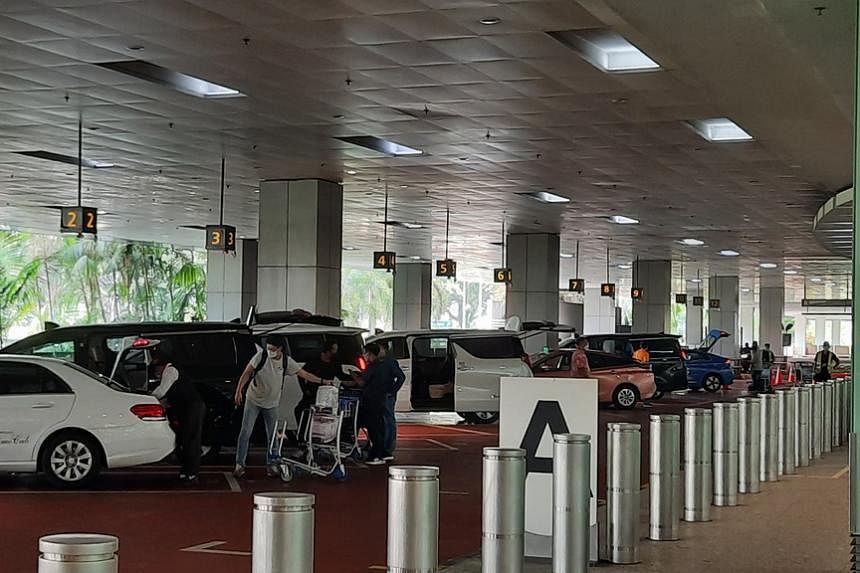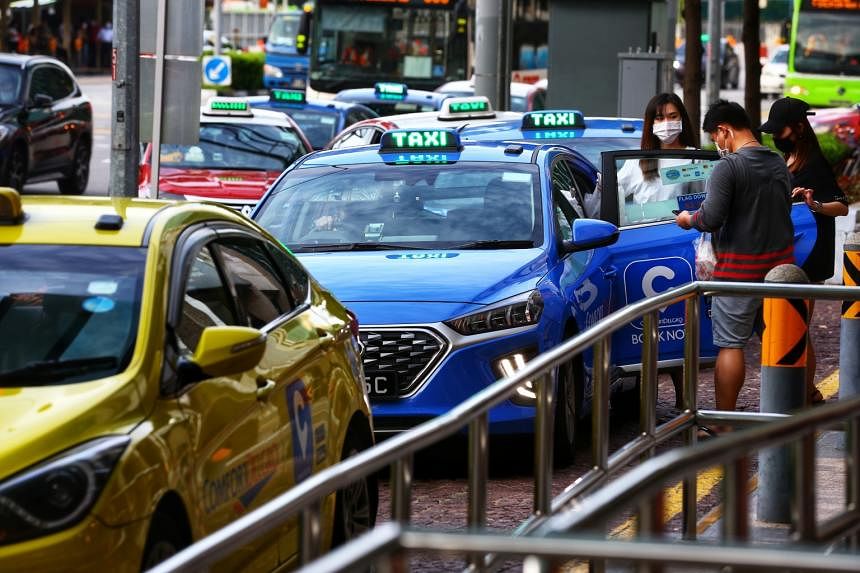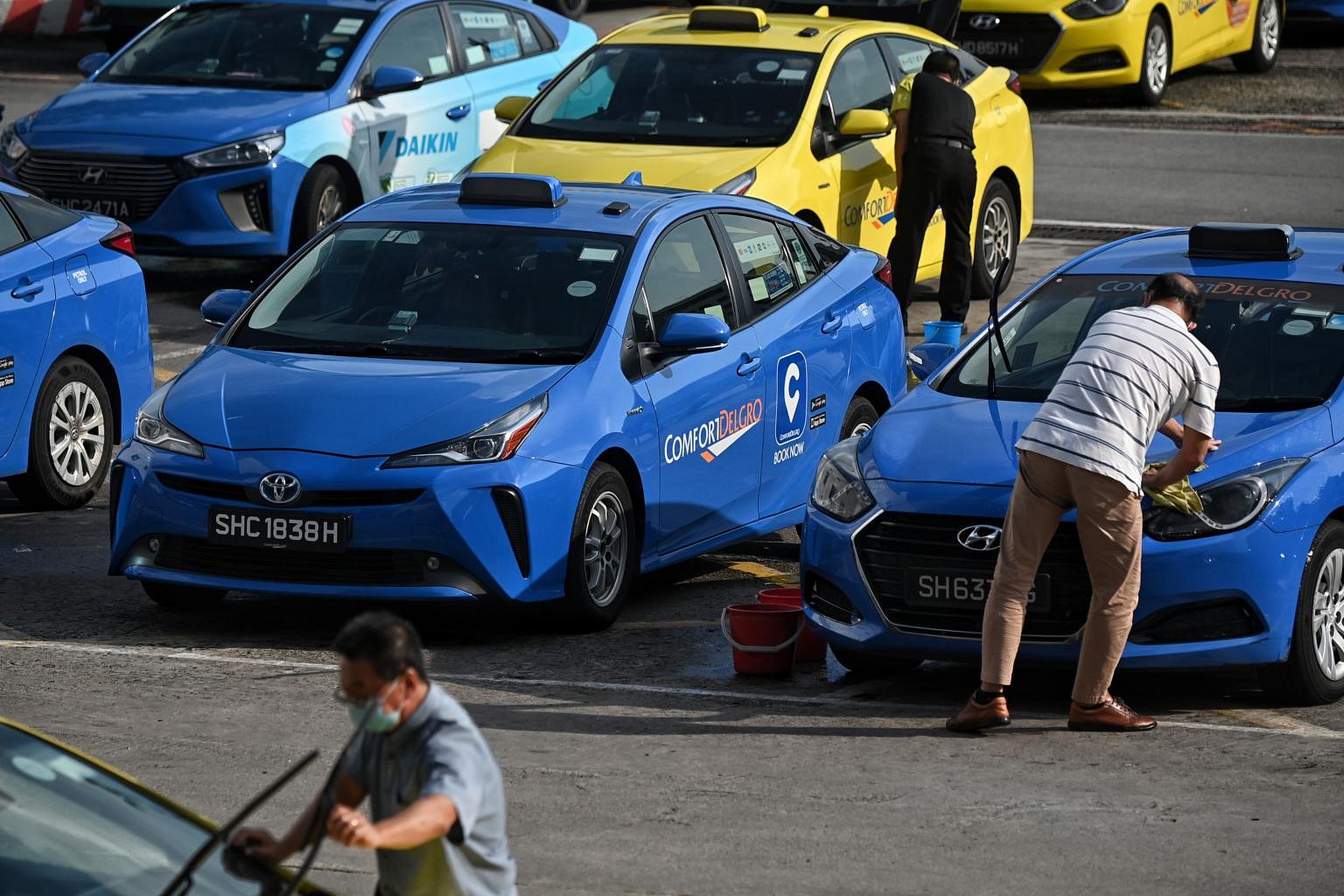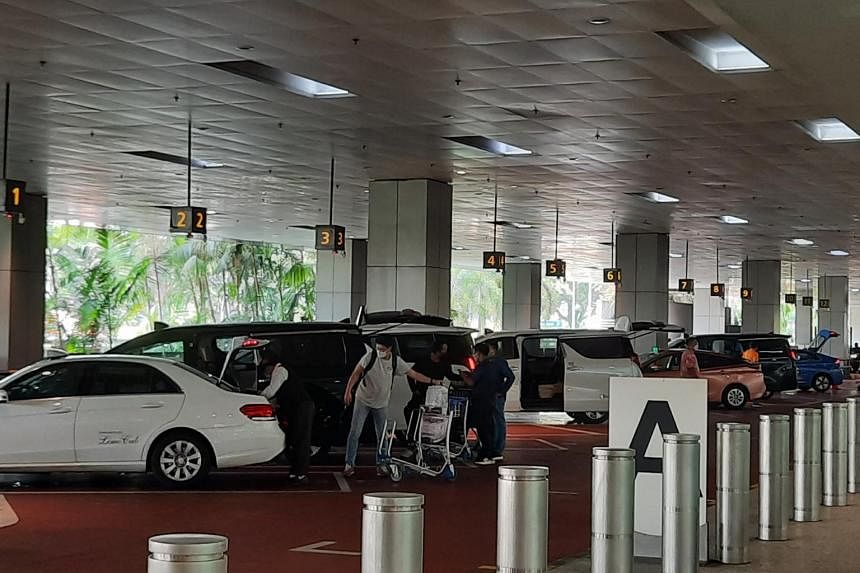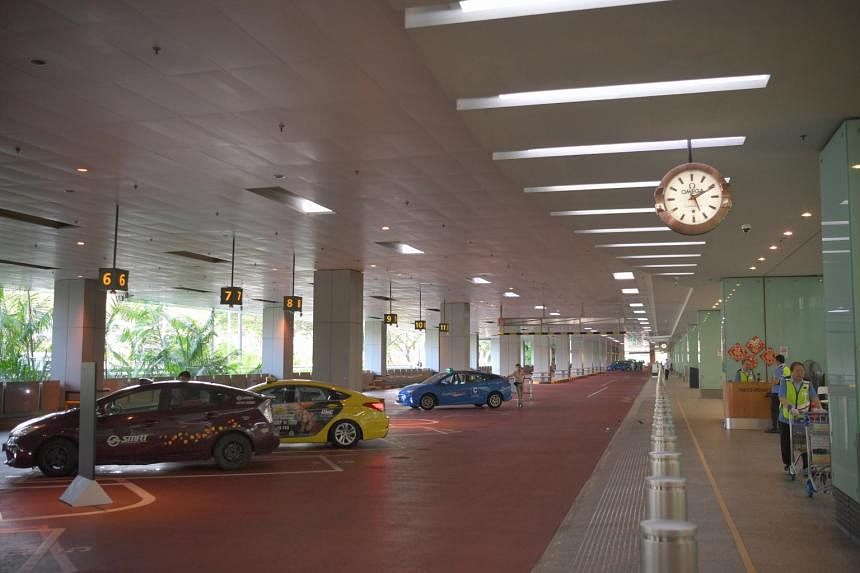Frustrations as taxi and ride-hailing fares surge, and bookings are rejected
The sudden spike in demand for rides has resulted in sharp increases of peak-hour ride-hailing fares. PHOTO: LIANHE ZAOBAO
Clement Yong,
Ning Chionh and
Faith Pang
PUBLISHED
May 2, 2022
SINGAPORE - Retiree Tony Lee, 73, was trying to get a ride from Joo Seng to Jalan Besar two Fridays ago. An hour after his search began at 6pm, he was still pacing the streets.
"I went on all the apps – Grab, Gojek, ComfortDelGro. But no one would accept my booking," he said. "The taxi stand in the area also had a really long queue so I had to walk around to try to flag down a cab."
At 7pm, he chanced upon a taxi driver on a restroom break at a nearby petrol kiosk and persuaded him to take him as a passenger. The metered ride cost $11, less than half the $20-plus fares quoted to him on the various ride-hailing apps.
As
Singapore drops most of its Covid-19 restrictions, Mr Lee's experience is becoming an increasingly common one, prompting growing unhappiness among passengers.
After more than two years of low ridership, more people are returning to the workplace, staying out late and, in general, going out, and the sudden spike in demand for rides has pushed peak-hour ride-hailing fares to two or even three times of what they were just last year.
Bookings made have also repeatedly been cancelled by drivers, prompting some people to already plan to end their nights out earlier, even as restaurants, bars and clubs are hoping for a rebound in nightlife.
"It is harder to get a ride now, and drivers cancel bookings a lot," said 19-year-old student Angel Chong. For her, a ride from the Hillview area to town used to cost $13 to $14. This is now $20 to $25 during non-peak hours and $35 after 11pm.
Front-desk worker at a tuition centre Paulie Teo, 24, said fares have surged since March. "I recently (spent a long time trying) to book a ride so I just gave up and took the MRT. I kept booking on the train but still couldn't get any cars," she added.
Strides Taxi driver Charles Ban, 51, said a trip from Bugis Junction to Bukit Batok at midnight on Friday can now be $50 to $60, attributing this to many night shift drivers dropping out of the industry in the past two years.
Replacing them is
not something that can be done overnight, with those who drive in the day either unable or unwilling to make the switch in working hours that they are now used to.
Some, like Mr Ban, cannot see well at night. Another taxi driver, 52-year-old Henry Tay, said the higher chance of getting drunken passengers who vomit in the back seat or run off without paying puts him off.
But Mr Ban said drivers are also declining bookings at night from town to heartland areas that are farther out to avoid returning to the nightlife spots without passengers.
"Petrol cost is quite high now, so they would rather do short trips in the centre of Singapore. That makes more sense for them," he added.
In the past two years, the number of taxi and private-hire drivers has steadily fallen, with drivers finding it hard to break even with ridership below 80 per cent of what it was pre-pandemic.
Amid the circuit breaker in May 2020, taxi and private-hire vehicle ridership was 26 per cent of that in 2019. In that same year,
HDT Singapore Taxi folded, leading to 90 drivers being let go.
As at November 2021, Land Transport Authority statistics showed there were 15,048 taxi drivers, compared with 2019's 18,542.
The number of private-hire car drivers also dipped, from 77,141 to 68,091, in the same period.
The dropout rate comes despite more than $1 billion having been disbursed by the Government to taxi and private-hire drivers since the pandemic struck, and the recent fare increases that operators have announced to help drivers defray higher fuel cost.
Taxi and private-hire car operators said they are monitoring the situation closely.
Largest taxi operator ComfortDelGro has been encouraging night relief drivers to drive more. It is trying to better match them with taxis that are currently used by only a single day driver, although it is not yet offering financial incentives to spur the shift.
MORE ON THIS TOPIC
ComfortDelGro to raise cab fares by around 8% in March
Other taxi firms in S'pore to follow ComfortDelGro in raising fares
Grab declined to comment, while Gojek pointed to existing schemes and incentives it offers that already seek to make driving at night more attractive, including bonus points per trip from midnight to 2.59am on Friday, Saturday and Sunday nights.
Mr Yeow How Pheng, head of SMRT's Strides mobility services, said Strides is actively recruiting more drivers, adding: "It takes some time for the situation to stabilise."
Associate Professor Walter Theseira of the Singapore University of Social Sciences said there is an understandable reluctance for operators to rush into increasing fleet sizes, given that past reopening decisions have been reversed.
Drivers and operators cannot survive on just one or two hours of surge fares a day alone and have to make their assessments based on the total income available to drivers.
Fewer drivers and high fuel costs are also contributing to the problem. PHOTO: ST FILE
"The total income available throughout the day, or the week, needs to be large enough to cover the required wage for the driver and the operating and capital costs of the vehicle," Prof Theseira said.
"As the market platforms and operators become more convinced that the resurgence in demand is here to stay, they will continue to ramp up their plans to attract drivers back. In the short term, the platforms and drivers are happy to earn higher commissions and fares."
Meanwhile, passengers will have to pay the higher fares for the private car rides - a premium transport option that is also looking to attract workers in a tight labour market.
Prof Theseira added: "Driving is not an easy job, so why should we think that drivers owe us a cheap and easily available ride?"

